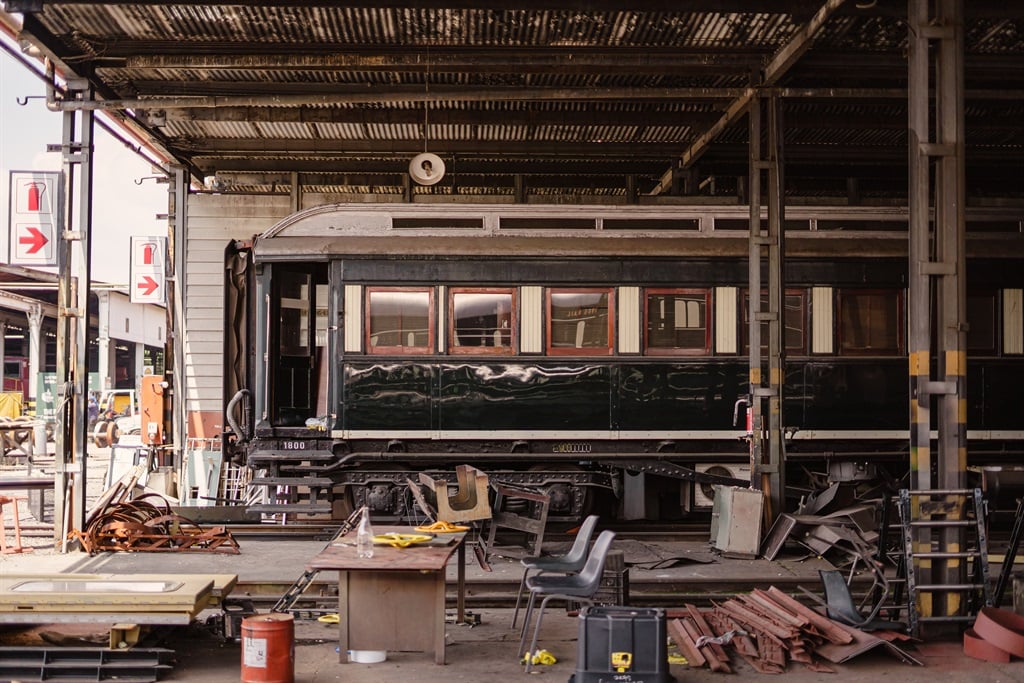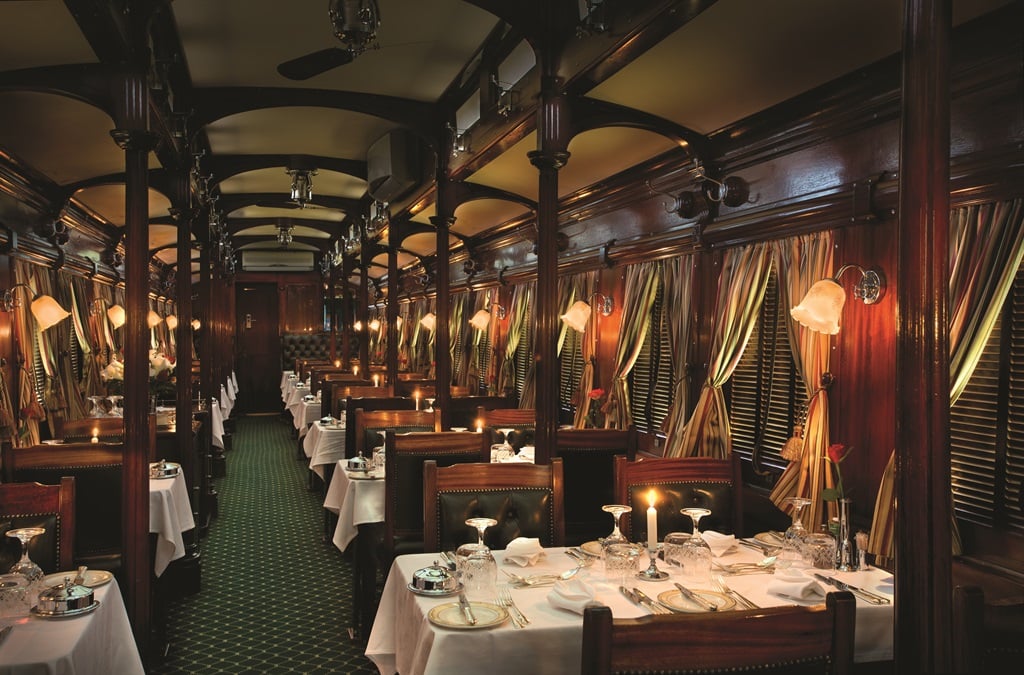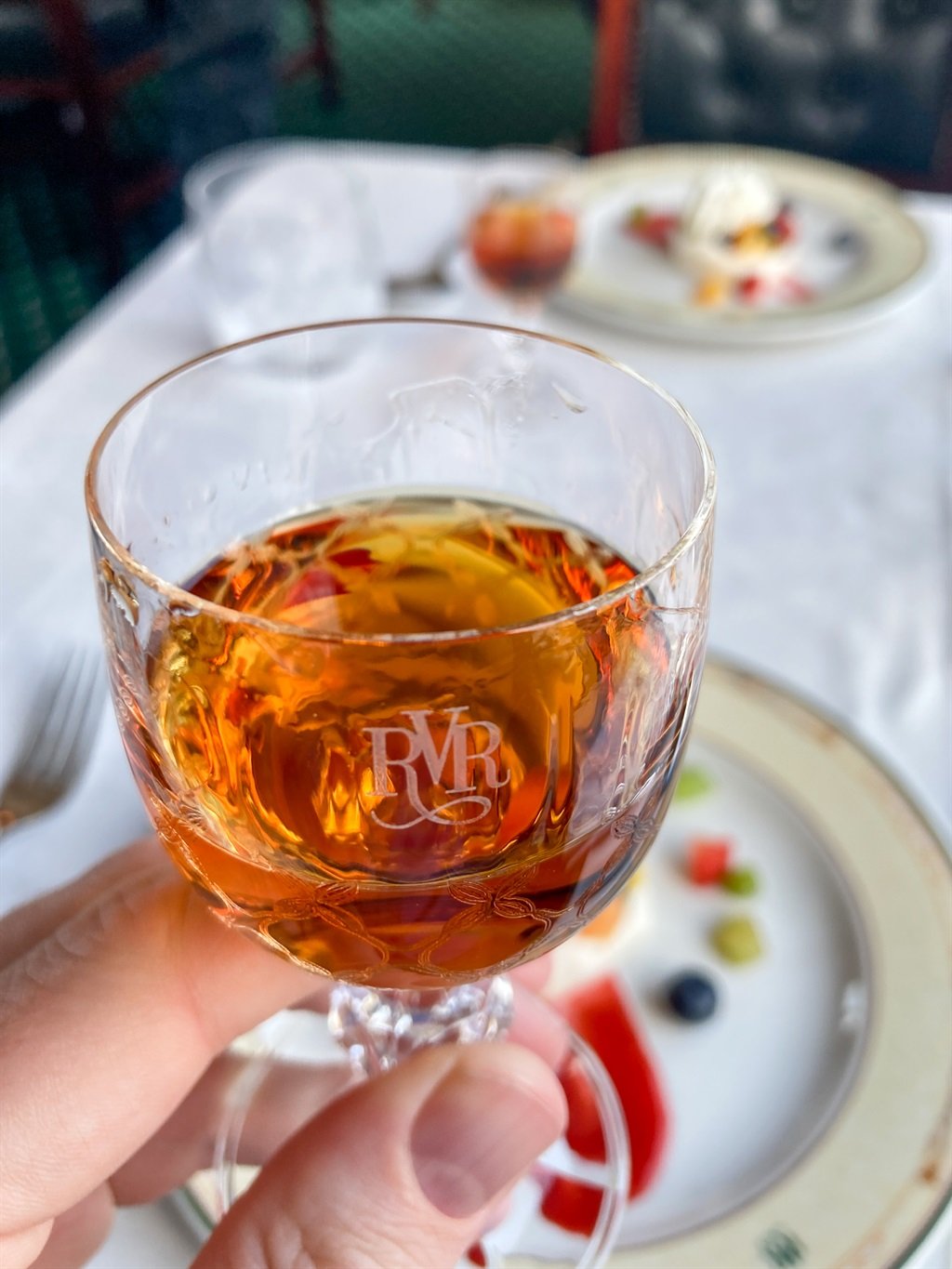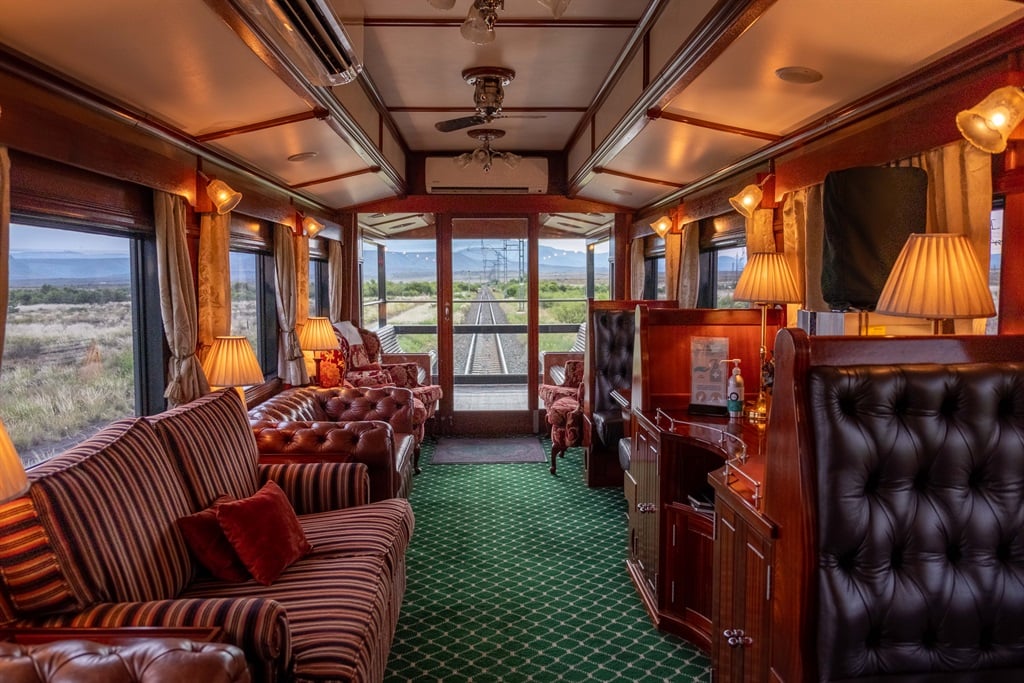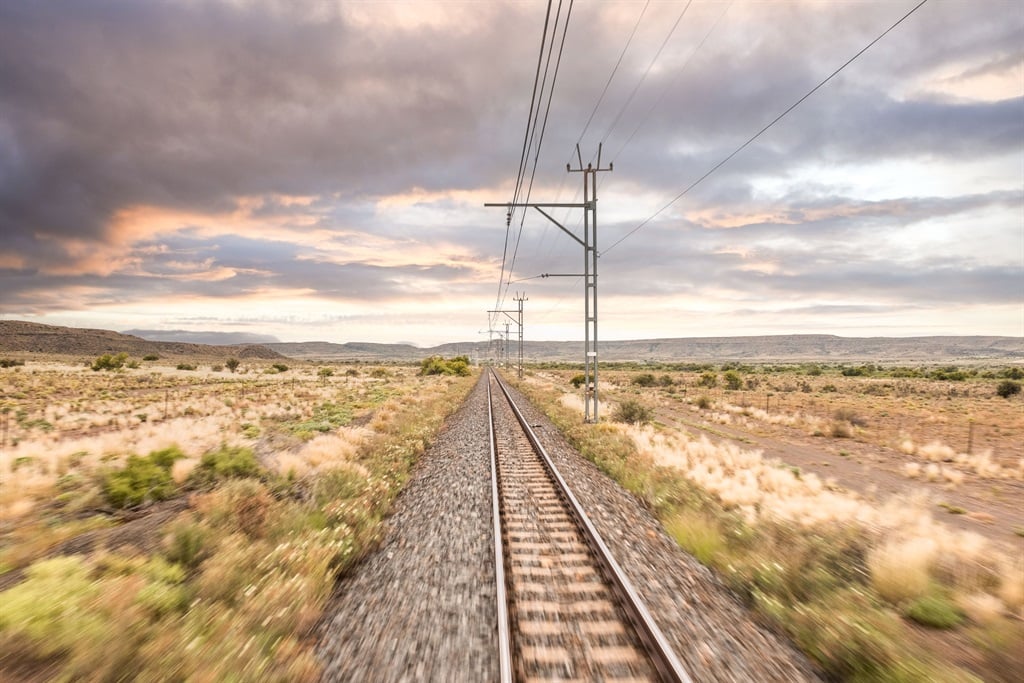News
TAKE A LOOK | What it’s like to travel on the Rovos Rail, Africa’s most luxurious train
Review
- The Rovos Rail is one of the most luxurious trains in the world.
- Suites have double beds and private bathrooms with showers – some with Victorian bathtubs, too.
- The family-owned business has survived crises like near-bankruptcy, Covid lockdowns, and crumbling national rail infrastructure – but remains one of the world’s best.
- On-board luxuries include black-tie dinners, twice-daily wine pairings, and a club lounge with an open-air observation car.
- All food, drinks, and excursions are included in the price.
- And the constantly shifting South African scenery is dramatic.
- Here’s what it’s like to travel between Pretoria and Cape Town on the Rovos Rail.
- For more stories, go to www.BusinessInsider.co.za.
When South Africa’s Rovos Rail began in the late 1980s, it was the first train in the world to feature on-board luxuries like double beds and en-suite bathrooms. And despite some modern-day difficulties, it’s still the most luxurious train in Africa that sits comfortably among the top five in the world.
The Rovos Rail is a family-owned business that has averted multiple near-disasters in its 34-year history. These include early business missteps like sending an empty train to Dar Es Salaam, lockdowns during the Covid-19 pandemic, and current struggles with state-run rail infrastructure, load shedding, and cable theft.
Founder Rohan Vos, who still runs the company and is often on hand to greet arriving or departing guests, says when he presented the idea of a luxury train to travel agents, most thought he was crazy.
“You must appreciate that nowhere in the world was there a train with a bathroom en-suite,” Vos said shortly before departure from Pretoria. “That was totally unheard of. And to have a double bed? That was really going over the top!”
There’s still little about a journey on the Rovos Rail that isn’t over the top. Guests are informed before booking that cellphones and electronic devices are discouraged in public areas, and that attire on the train is smart casual during the day – and formal at dinner.
In a further hark back to an era of lavish luxury, finishes, from plush carpets to mahogany-panelled walls with soft incandescent downlighting, set the mood.
All glassware is crystal, cutlery is silver, and both bear RVR insignia. On select nights staff may even light candles in the dining carts for extra ambience and dress up their already smart attire to full black tie level.
And despite many difficulties outside of its control, it’s clear that travellers worldwide still revere Rovos Rail. This journey, between Pretoria and Cape Town in early January, involved 21 coaches and 31 suites, which slept 59 guests from 13 different countries – a train almost at full capacity for the three-night journey.
Here’s what it’s like to travel between Pretoria and Cape Town on the Rovos Rail.
There are several route options available on the Rovos Rail, but the most iconic is still the 1600km journey between Pretoria and Cape Town, which you can ride in either direction.
Due to possible delays on the lines, Rovos Rail has extended the trip from two to three nights, which means an additional night to appreciate the all-inclusive onboard hospitality.
Trains departing Pretoria do so from the private Rovos Rail station, where guests are greeted on arrival by staff who collect bags and assign them with personalised luggage tags. The next time you see your luggage, it will be in your suite onboard the train.
Guests are given a choice of beverages on arrival, including a glass of sparkling MCC to toast the occasion. And when possible, founder Rohan Vos is on hand to greet guests and offer a guided tour around the working train yard.
Rovos Rail still buys up many coaches left for scrap around the country – and it’s here that a team of craftspeople, many of whom were trained by the company, fix them up to exacting standards.
“I’m quite proud of the fact that most of the staff that you see here came to us with no training or skills specific to trains. We found out their bent and trained them up,” says Vos.
The Pretoria property now spans 60 acres, has 16 railway lines, storage space for imported wood and other equipment, and can turn gutted coaches around in a matter of weeks.
Nothing can quite prepare you for the first moment you step onto the train.
Unless cable theft or other operational issues get in the way, guests will board the trains directly at Rovos’s Pretoria station – or Cape Town station if travelling in the other direction.
Stepping into the lounge car for the first time is an overwhelming experience – soft lighting, plush carpets, wood-panelled walls, and deep, comfortable sofas seem at odds with what you’d expect on most trains.
Guests then meet their dedicated host or hostess, who show you to and around your suite, and will offer in-room assistance for the duration of the journey.
There are currently three suites available on most Rovos journeys – Pullman, Deluxe, and Royal.
Each air-conditioned suite has a private bathroom with a toilet, basin and shower, and tea and coffee facilities.
There are multiple mains plug points, hanging paintings, shutters and windows that open and close, and telephones to contact fellow guests or staff.
Although each is exquisitely appointed, room options offer increasing features, space, and comfort.
The Pullman Suites are the smallest and most cost-effective way to travel on the Rovos Rail – with a twin or double bed that can convert into a sofa during the day.
The Deluxe Suites are the most popular – they’re slightly bigger and have a small lounge area with two high-back chairs and a stocked bar fridge.
The Royal Suites are the most lavish option. They take up half a carriage, and unlike other options, their en-suite bathroom includes a Victorian bath.
Wood, much of it mahogany imported from West Africa, plays a central role in the design of the Rovos Rail. And woodworking is one of at least ten disciplines in the company, with many staff arriving without the requisite skills.
“I’m very proud of the wood finish on the trains. Things like the doors, cupboards, and picture frames were built by people who previously knew nothing about the craft, and they’re doing a superb job of carpentry on the train,” Vos says.
Apart from the rooms and passing scenery, meals are the main attraction onboard the Rovos Rail.
Breakfast is the most casual affair, with guests free to arrive between 7 am and 10 am and order off a menu that changes daily.
For lunch and dinner, staff announce the start time by hand-played gong for a 10-minute warning, and guests are encouraged to arrive promptly for a simultaneous sitting.
Lunch and dinner change daily. They’re set four-course menus with starter, main, cheese, and dessert, each paired with a different South African wine.
Each meal is unique and prepared fresh in a small kitchen coach on board the train – with chefs seamlessly putting out up to 60 courses per sitting. Tables are set with linen tablecloths, serviettes, silverware, and crystal glasses.
Servers move through the two dining coaches with ease topping up wine glasses and delivering dishes in a manner more familiar to a high-end restaurant.
On our journey in January, starters and mains included extravagant dishes like beef tagliata, roast ostrich, millefeuille of smoked crocodile, duck breast, seared scallops, and lamb rump.
Vegetarian alternatives are also available with prior warning – or spontaneously when available.
Cheeses and preserves changed at every meal and were followed by desserts like chocolate marquise, malva pudding, frozen blueberry cheesecake, chocolate fondant, and berry pavlova – each paired with a liqueur or dessert wine.
After meals, guests can return to their rooms. But many choose to relax in the lounge car towards the middle of the train. Or – our pick – the observation car at the back.
The observation car is the more sociable of the two common areas and an excellent place to talk with guests from around the world.
En-route is a sealed smoking room (the only place smoking is allowed on board) and a club lounge with a full-service bar, various chairs for reclining or writing, and snacks. It’s also in the lounge cars that staff serve daily high-teas.
One of the greatest pleasures of any Rovos Rail train is the open-air section at the very back.
Guests can sit on the shaped wooden benches and watch the scenery roll past – with coffee, beer, wine, or gin and tonics in hand if they please.
Many use the open-air coach to photograph and video the disappearing tracks.
But it’s also an ideal place to spend time if you’re interested in getting photographs of the train as it snakes around the occasional corners.
The journey between Pretoria and Cape Town has two scheduled stops – Kimberly and Matjiesfontein.
In Kimberly, there’s an organised tour, operated by a third party, to the Big Hole and Diamond Museum.
And in Matjiesfontein, guests can explore the small iconic village at leisure.
And snap photographs of the iconic station sign.
Outside of meal times and excursions, the best way to pass the time is to watch the South African countryside rolling casually past the windows.
Unlike many trains around the world, all Rovos suite and carriage windows are openable, allowing for fresh air and unobstructed views.
On the trip between Pretoria and Cape Town, you’ll pass many scenic and notable attractions like the Vaal and Orange Rivers, Hex River Valley, and Matroosberg mountains and tunnels – some of which may be in the dark due to scheduling issues.
But even so, there’s unparalleled beauty in the constantly-shifting Karoo, which accompanies you for much of the journey.
You’ll spot lone windmills, smiling schoolchildren, abandoned hotels, remote graveyards, small villages, lush farms, and possibly wildlife like antelope, ostriches, and baboons.
Some issues outside of Rovos’s control, like cable theft, load shedding, and signalling, get in the way of the scheduling. This requires trains to, at times noisily, travel through the night to make up time – but services and staff on board don’t skip a beat for the entire four-day journey.
And although it’s now a day longer to accommodate these logistical issues, it’s a near guarantee that when the time comes to disembark, you’ll do so dreaming of a return trip. And with an emotional goodbye to the hard-working crew who brought to life what is still one of the world’s epic overland journeys.
Booking on the Rovos Rail
There are multiple Rovos Rail routes to pick from, including Pretoria to Cape Town, Pretoria to Durban, and Pretoria to Victoria Falls – or their reverse alternatives. There are also less frequent journeys elsewhere in Africa – like the epic two week long African Trilogy or Dar Es Salaam trips.
Rovos Rail also offers residents of South Africa and neighbouring countries a 50% discount on selected Cape Town, Durban and Victoria Falls journeys throughout the year, bookable via their website contact form.
Andrew Thompson was a guest of Rovos Rail.


